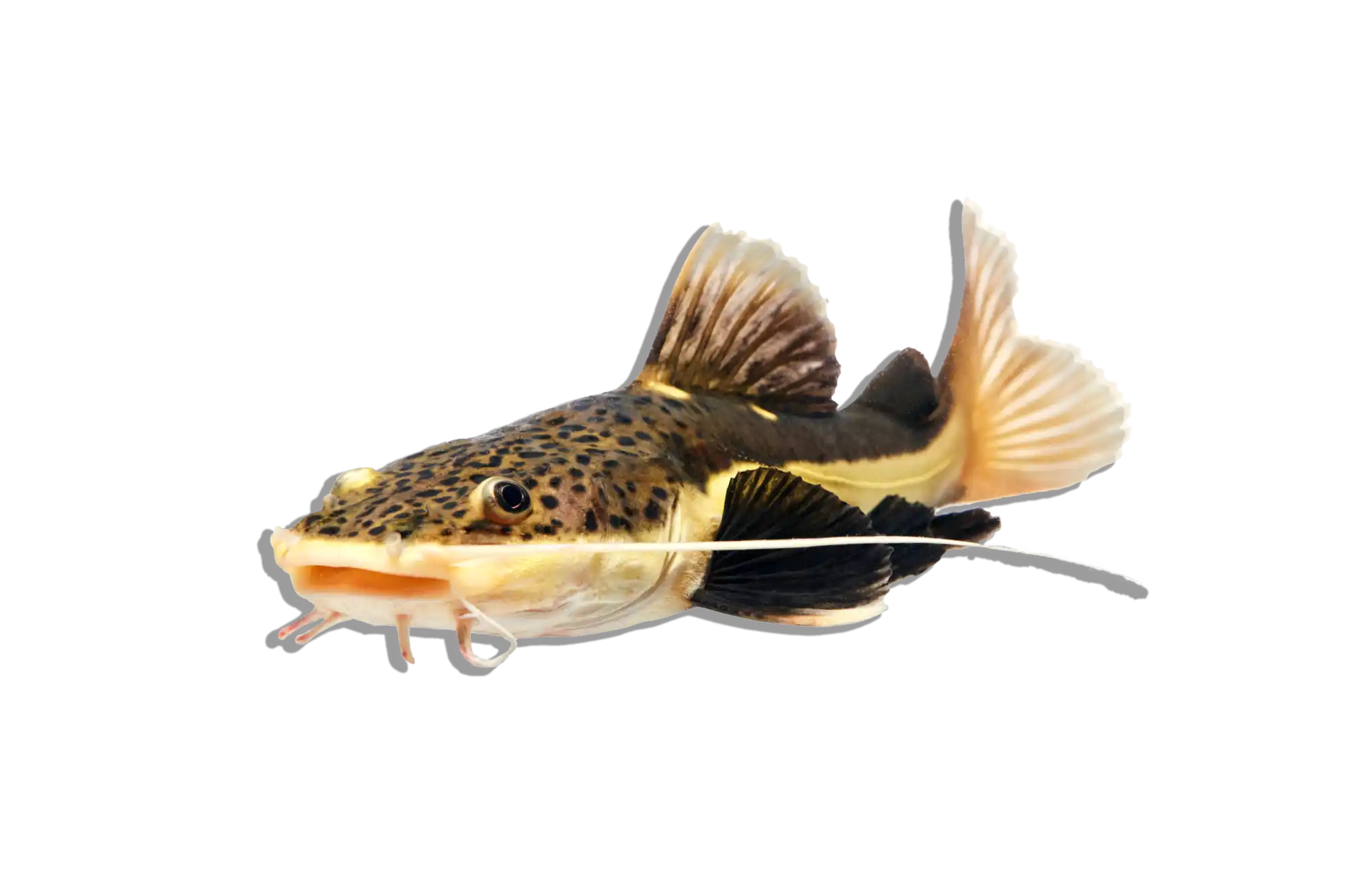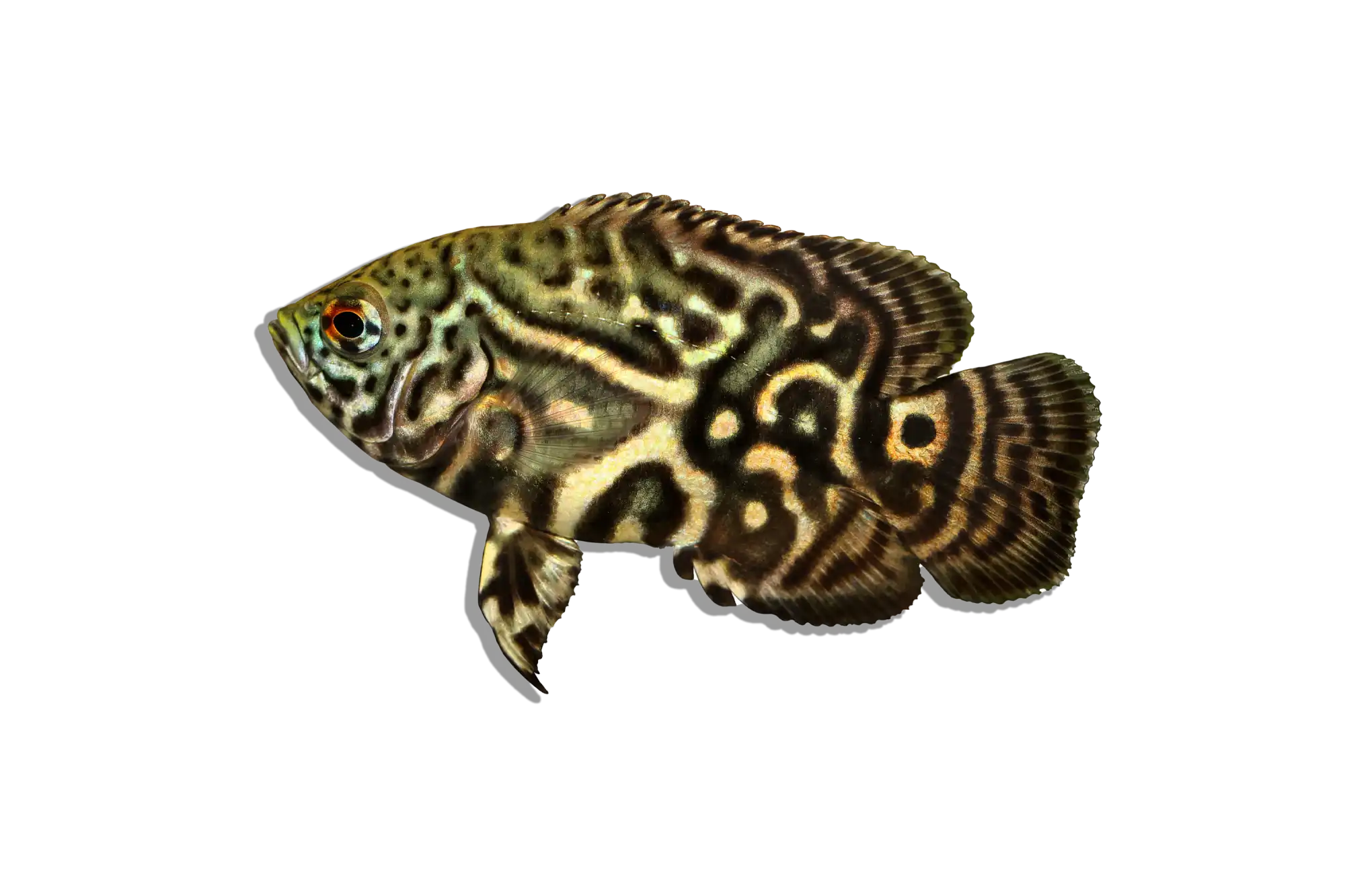Description
Common Name: Blue Eyed Pleco
Scientific Name: Panaque cochliodon
Other Names: Blue Eye Plecostomus, Blue Panaque
The Blue Eyed Pleco is a stunning and unique freshwater fish known for its vibrant blue eyes and striking appearance. This species features a dark, almost black body with a robust, armored appearance characteristic of the Panaque genus. The bright blue eyes stand out dramatically against the dark body, making this pleco a highly sought-after species among aquarists.
Habitat and Distribution: The Blue Eyed Pleco is native to the Magdalena River Basin in Colombia, South America. These fish inhabit slow-moving rivers and streams with plenty of driftwood and submerged vegetation. The water in their natural habitat is typically warm, soft to moderately hard, and slightly acidic to neutral. The rivers and streams where they are found often have sandy or muddy substrates, providing ample hiding spots and foraging opportunities.
Size and Lifespan: In both the wild and captivity, Blue Eyed Plecos can grow up to 12-14 inches (30-35 cm) in length. Their lifespan can range from 10 to 15 years, depending on the care and conditions provided in the aquarium. Ensuring a proper diet, clean water, and adequate space are crucial for their longevity and well-being.
Diet and Behavior: Blue Eyed Plecos are primarily herbivorous, with a significant portion of their diet consisting of wood. In the wild, they feed on submerged wood and algae. In an aquarium, their diet should include a constant supply of driftwood for them to graze on, as it is essential for their digestion. They should also be provided with high-quality vegetable-based pellets, algae wafers, and fresh vegetables such as zucchini, cucumber, and spinach. These plecos are generally peaceful but can be territorial, especially towards other plecos or similar species. They are primarily nocturnal, becoming more active at night when they forage for food.
Breeding and Reproduction: Breeding Blue Eyed Plecos in captivity is challenging due to their specific environmental needs and behaviors. Little is documented about their breeding habits in the wild, and successful reproduction typically involves creating conditions that closely mimic their natural habitat. A large, well-structured tank with plenty of hiding spots, optimal water conditions, and a high-quality diet can increase the likelihood of breeding. Blue Eyed Plecos are cave spawners, and providing appropriate caves or hollow logs is essential for spawning.
Aquarium Care and Tank Requirements: To keep Blue Eyed Plecos, a large aquarium of at least 100 gallons is recommended to provide ample swimming space and accommodate their size. The tank should include plenty of driftwood, rocks, and hiding spots to mimic their natural habitat and reduce stress. A sandy or fine gravel substrate is ideal, along with moderate water flow to simulate river conditions. Efficient filtration and regular water changes are essential to maintain water quality. Providing a naturalistic environment with plenty of space and hiding spots is crucial for their well-being.
Ideal Tank Mates: Blue Eyed Plecos can be kept with other peaceful, similarly sized fish that share similar water parameter requirements. Suitable tank mates include larger tetras, peaceful cichlids, and other non-aggressive catfish. It is important to avoid housing them with very small fish, which may be seen as prey, or overly aggressive fish that may bully or stress them.
Difficulty Level: Intermediate to Advanced. While they are hardy and adaptable, their specific dietary needs, potential for territorial behavior, and requirement for pristine water conditions require attentive care and a well-maintained aquarium.
Water Parameters:
- Temperature: 75-82°F (24-28°C)
- pH: 6.0-7.5
- General Hardness (GH): 4-12 dGH
- Carbonate Hardness (KH): 2-6 dKH
- Ammonia: 0 ppm (ideal), up to 0.25 ppm (max)
- Nitrite: 0 ppm (ideal), up to 0.25 ppm (max)
- Nitrate: <20 ppm (ideal), up to 40 ppm (max)
Additional Information:
- The Blue Eyed Pleco's vibrant blue eyes and unique feeding habits make it a captivating and beneficial addition to any large aquarium, providing both visual interest and algae control.
- These fish are known for their ability to consume wood, which is essential for their digestion and overall health. Regularly providing driftwood is crucial.
- In their natural habitats, Blue Eyed Plecos play a role in maintaining the balance of the ecosystem by consuming wood and algae, contributing to nutrient cycling.
- Fun fact: The Blue Eyed Pleco is one of the few fish species that have a diet primarily composed of wood, a behavior known as xylophagy, which is rare in the aquatic world.




















